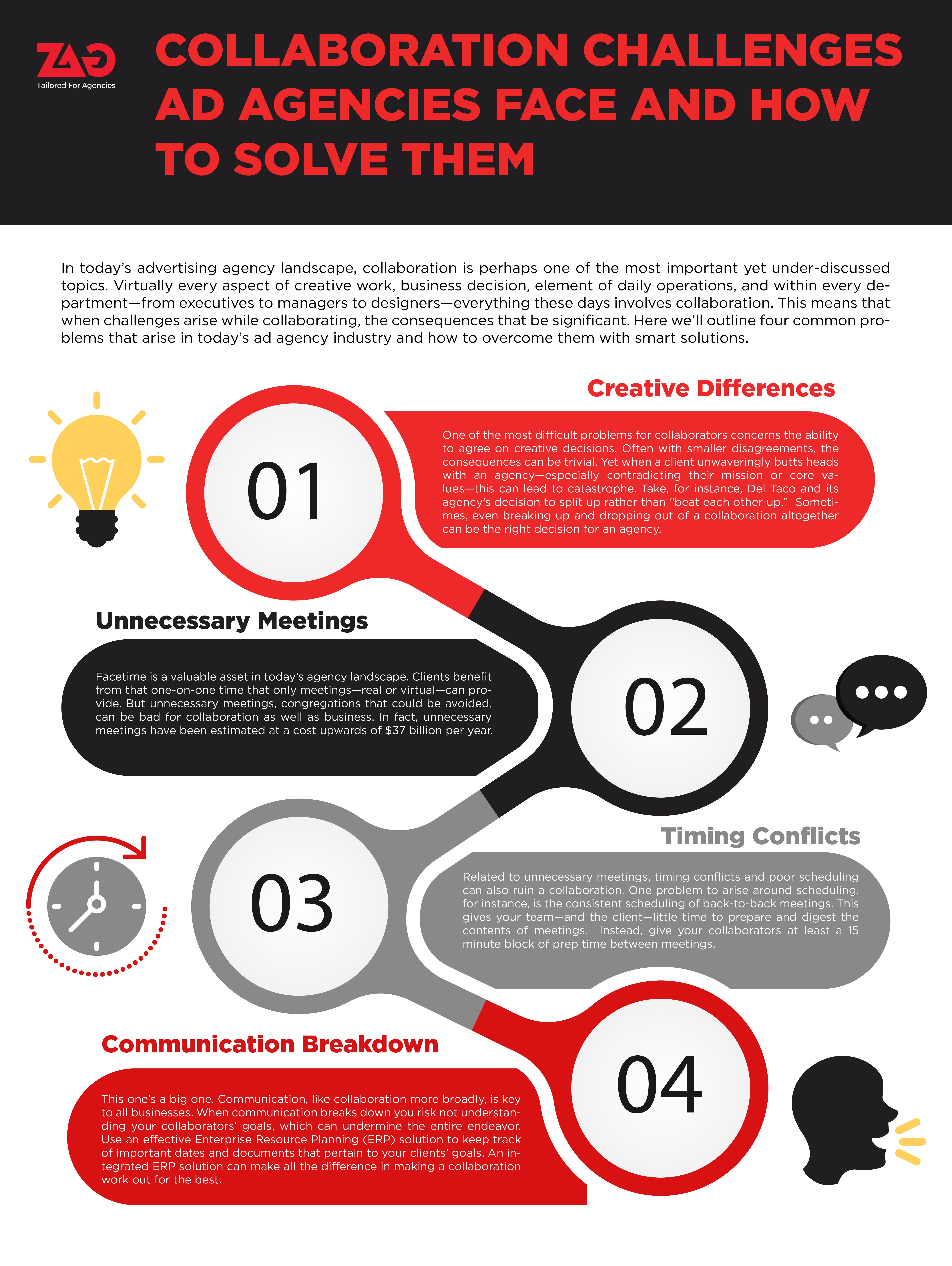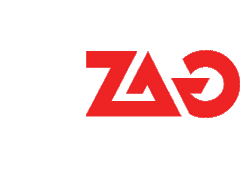
Collaboration Challenges agencies face and their Solutions
In today’s advertising agency landscape, collaboration is perhaps one of the most important yet under-discussed topics. Virtually every aspect of creative work, business decision, an element of daily operations, and within every department—from executives to managers to designers—everything these days involves collaboration. This means that when challenges arise while collaborating, the consequences that be significant. Here we’ll outline four common problems that arise in today’s ad agency industry and how to overcome them with smart solutions.
- Creative Differences. One of the most difficult problems for collaborators concerns the ability to agree on creative decisions. Often with smaller disagreements, the consequences can be trivial. Yet when a client unwaveringly butts heads with an agency—especially contradicting their mission or core values—this can lead to catastrophe. Take, for instance, Del Taco and its agency’s decision to split up rather than “beat each other up.”Sometimes, even breaking up and dropping out of a collaboration altogether can be the right decision for an agency.
- Unnecessary Meetings. Face time is a valuable asset in today’s agency landscape. Clients benefit from that one-on-one time that only meetings—real or virtual—can provide. But unnecessary meetings, congregations that could be avoided, can be bad for collaboration as well as business. In fact, unnecessary meetings have been estimated at a cost upwards of $37 billion per year.
- Timing Conflicts. Related to unnecessary meetings, timing conflicts, and poor scheduling can also ruin a collaboration. One problem to arise around scheduling, for instance, is the consistent scheduling of back-to-back meetings. This gives your team—and the client—little time to prepare and digest the contents of meetings. Instead, give your collaborators at least a 15-minute block of prep time between meetings.
- Communication Breakdown. This one’s a big one. Communication, like collaboration more broadly, is key to all businesses. When communication breaks down you risk not understanding your collaborators’ goals, which can undermine the entire endeavor. Use an effective Enterprise Resource Planning (ERP) solution to keep track of important dates and documents that pertain to your clients’ goals. An integrated ERP solution can make all the difference in making a collaboration work out for the best.
June 4, 2018
in ERP, Uncategorized
No Comments
